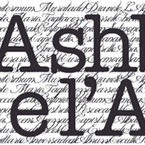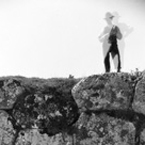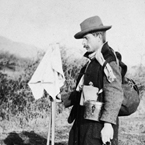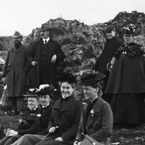
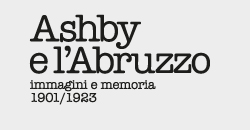

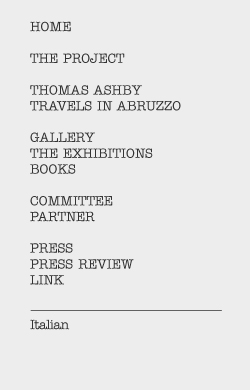
The British archaeologist Thomas Ashby (1874-1931) was a renowned scholar who gained recognition from the most important cultural institutions in Italy and abroad.
His interest in classical studies and passion for the ancient monuments of Italy led him to move to Rome, where he lived for many years. In 1901 he was admitted as the first student of the British School at Rome, of which he became the Director from 1906 to 1925. This was the time at which archaeology became a modern discipline with its own methodology. The young archaeologist’s early years in Rome coincided with a period of intensive excavations in the city’s monumental centre. These laid the bases for our understanding of the topography of the centre of Rome. During these years Ashby also had an opportunity to get to know Rodolfo Lanciani, Giacomo Boni and other famous archaeologists who were fundamental for his future career.
Ashby was among the most enthusiastic and assiduous visitors to the excavations in the Forum area. During his visits he took detailed notes which, together with his sketches and photographs, were sent to British journals on a regular basis, summarizing the most recent discoveries.
As well as to Rome and its monuments, Ashby’s interest was also strongly drawn to the exploration of the Roman Campagna with its wealth of as yet unknown archaeological features. He became an expert on these like Lanciani, Tomassetti and Lugli, among the founders of modern archaeological topography. In all his topographical studies Ashby adopted a rigorous methodology: he followed the major roads of antiquity marking their route on topographical maps. He explored the surrounding area describing all that survived of its ancient remains, and combining his patient observation of the area with historical sources and bibliographical references to published and unpublished works, illustrating his work with plans and photographs. Giuseppe Lugli, a self-declared disciple of Ashby’s in the rigorous application of this methodology, declared: “Where Ashby’s feet have passed, we used to say jokingly among his disciples and friends, there is nothing left for archaeologists to harvest”.
Ashby’s studies on Rome, the Roman Campagna, on the Lazio region, on other towns in Italy and Europe scattered in various publications continue to be a fundamental reference point for scholars today. Ashby was an eclectic academic: his research interests ranged from the field of archaeology and topography to architecture, art history and antiquarian collectorship. He was extremely familiar with the libraries and archives scattered around the world and his competence as a scholar and collector of antique books and drawings led him to devote special care to seeking out plans and views of Rome and other areas of Italy by the architects and artists of the Renaissance and by the British travellers of the Grand Tour. These documents were the subject of numerous publications, often based on copies from his own substantial collection. To conclude our brief overview of the work of this enthusiastic and prolific archaeologist, whose list of publications is of extraordinary size and quality and certainly deserves greater attention, we cannot fail to mention Thomas Ashby’s interest in Italian folk culture, to which he devoted many years of research. He personally observed festivals and rituals in many Italian towns, taking notes and photographs, collecting information from parish priests and the inhabitants of the places he visited, from books and guidebooks. The results of these years of research were published in the volume Some Italian Scenes and Festivals in 1929 (London Methuen & Co. Ltd.), a collection of descriptions and images of festivals, customs, monuments and landscapes encountered in various regions of Italy.
L'eredità di Thomas Ashby
In years of intensive work as an archaeologist, topographer and bibliophile, Thomas Ashby accumulated thousands of pages of notes, a huge number of publications and a large collection of rare books which now form the core of the Library and Photographic Archive of the British School at Rome. However, to discuss Thomas Ashby’s wide-ranging interests without including photography would be to ignore one of his main professional tools. Even as a young man he understood the documentary value of photography, of which he made constant use as a sort of visual note, creating a personal research archive which also aimed to supply illustrations for his own publications. Ashby took about 9000 photographs between 1890 and 1925. These were carefully pasted into 18 albums in chronological order, usually accompanied by a note next to the photograph of the subject, location and number of the corresponding negative. These albums (the most interesting of the collections in the Photographic Archive of the British School at Rome) can be read as a visual autobiography describing Ashby’s life and interests. Contrary to expectations, the albums hold both photographs of monuments and archaeological sites, immortalized during excursions and travels in Italy, Europe, Australia, America, Japan, North Africa etc., and photographs of the landscapes and of the people, especially the rural people, whom Ashby came across during his frequent exploratory trips to the countryside and towns of the Italian provinces.
Some of Thomas Ashby’s photographs are linked to the activities and excursions organized by the members of the British and American Archaeological Society (founded by John Henry Parker), and whose members included Ashby himself, Peter Paul Mackey, George Joseph Pfeiffer and the sisters Dora and Agnes Bulwer. The close network of friendship and cultural exchange between these scholars and “amateur photographers” slowly gave rise to what are now the oldest and most fascinating photographic collections in the British School at Rome Archive.
